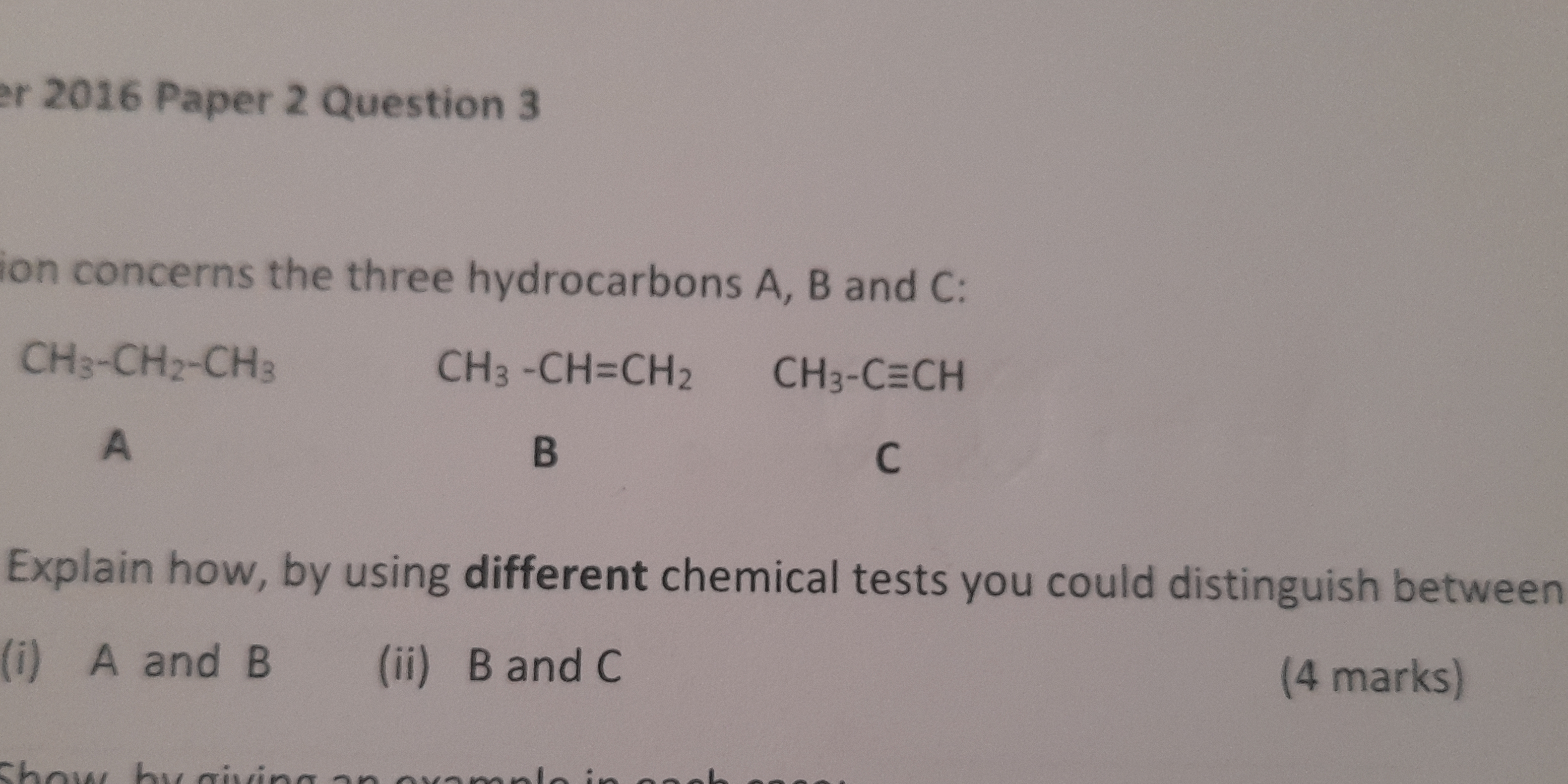Explain how, by using different chemical tests, you could distinguish between: (i) A and B (ii) B and C, where A is Propane (CH3-CH2-CH3), B is Propene (CH3-CH=CH2), and C is Propy... Explain how, by using different chemical tests, you could distinguish between: (i) A and B (ii) B and C, where A is Propane (CH3-CH2-CH3), B is Propene (CH3-CH=CH2), and C is Propyne (CH3-C≡CH).

Understand the Problem
The question asks us to determine how to chemically distinguish between three hydrocarbons: A (Propane), B (Propene), and C (Propyne). Specifically, it requires you to explain chemical tests that can differentiate between (i) A and B, and (ii) B and C. To answer this question, you must propose chemical reactions that will react differently in the presence of these hydrocarbons and yield distinct observable results.
Answer
Use bromine water to differentiate Propane (A) and Propene (B). Use Tollen's reagent to differentiate Propene (B) and Propyne (C).
(i) To distinguish between Propane (A) and Propene (B), use bromine water. Propene (B) will decolorize bromine water, while Propane (A) will not show any change. (ii) To distinguish between Propene (B) and Propyne (C), use Tollen's reagent. Propyne (C) will react with Tollen's reagent to form a silver mirror, while Propene (B) will not react.
Answer for screen readers
(i) To distinguish between Propane (A) and Propene (B), use bromine water. Propene (B) will decolorize bromine water, while Propane (A) will not show any change. (ii) To distinguish between Propene (B) and Propyne (C), use Tollen's reagent. Propyne (C) will react with Tollen's reagent to form a silver mirror, while Propene (B) will not react.
More Information
Propene (B) decolorizes bromine water due to the presence of a double bond, which undergoes an addition reaction with bromine. Propyne (C) reacts with Tollen's reagent because it is a terminal alkyne (has a hydrogen atom bonded to the triply bonded carbon), forming a silver acetylide precipitate (silver mirror).
Tips
A common mistake is confusing the reactions of alkanes, alkenes, and alkynes. Remember that alkanes are saturated hydrocarbons and generally unreactive, while alkenes and alkynes undergo addition reactions. Terminal alkynes have unique reactivity due to the acidic hydrogen.
Sources
AI-generated content may contain errors. Please verify critical information